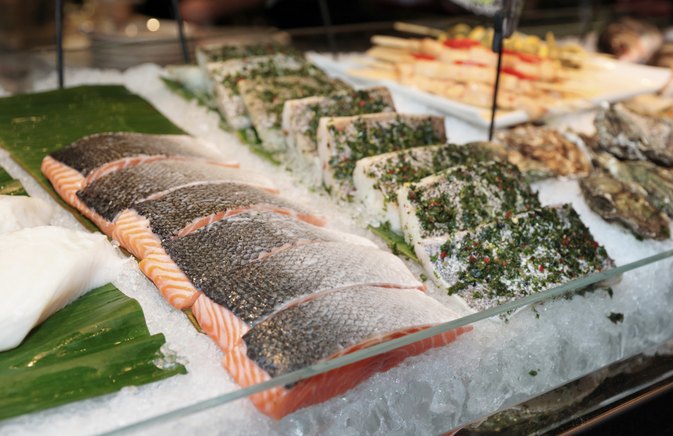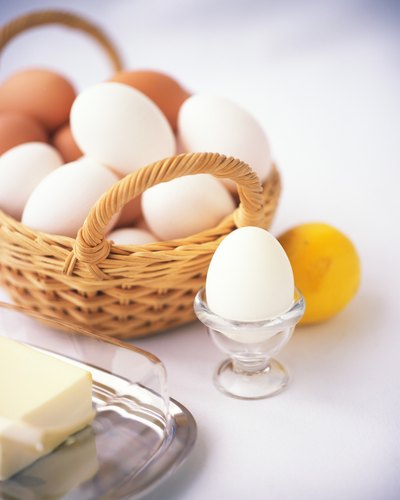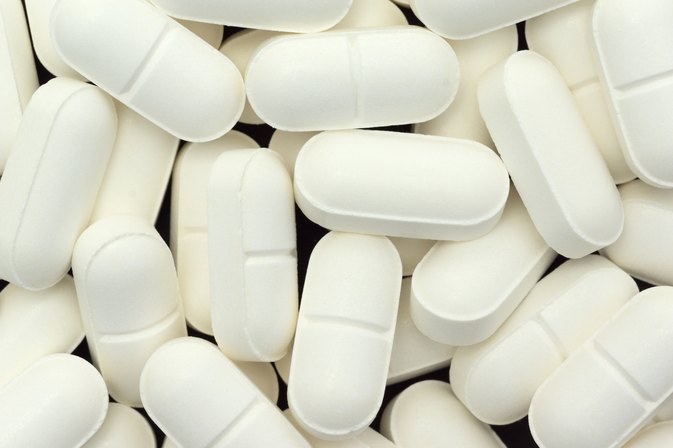JANUARY 28, 2018
BY CHRIS CHAN

Here is the second part of my jottings on items that caught my eye in the the final week of October 2017.
Read Part 1
A fart-ual story
There is definitely some truth in the old Chinese saying that one’s own farts always smell better than someone else’s emissions. I once nearly died (or felt very much like dying) when trapped in a car driven by someone who had emitted something terrifyingly mephitic but was so engrossed in conversation that he did not even notice. To be fair, it could also be my rather acute sense of smell, but I never rode with him in a car again.
Anyway, some newspapers were harping on about how the hydrogen sulphide in farts can protect against heart attacks, strokes, cancers and stave off dementia – this was actually a revival of an old story from 2014 when researchers at the University of Exeter had reportedly found that hydrogen sulphide (a major component of fart gas) can help prevent the death of cell mitochondria. In truth, what they really meant to say was that they had synthesised a complex compound called AP39 (chemically defined as [(10-oxo-10-(4-(3-thioxo-3H-1,2-dithiol-5yl)phenoxy)decyl) triphenylphosphonium bromide]) which is able to deliver small doses of hydrogen sulphide to sample cells undergoing oxidative stress in test cultures – and the mitochondria in these cells survived significantly better than cells which had not been treated with AP39. It is a very, very long way before AP39 (and controlled levels of hydrogen sulphide) can be medically used, assuming that a non-lethal way can be found to administer the compound into humans in the first place.
You have been warned, it’s there in the sign. Some stinky cheeses smell like fart. Photo: VisualHunt/Shell Belle
In short, farting around sick people will not help them – and in any case, the stink of farts is also affected by the amount of skatole present (skatole is a member of the indole family). If you are not aware, skatole (also known as 3-methyl-1H-indole) and indole are the compounds, which when present in sufficient quantities, simply induce extreme disgust – this is so that humans do not inadvertently ingest faecal material (where a lot of skatole and indole are present). Skatole is notable particularly because it is the compound which most humans find the most repellent in terms of smell. It is also an awesomely effective compound for attracting certain mosquitoes. Curiously, very tiny quantities of skatole and indole can have a somewhat tantalising aroma and are naturally present in some flowers, and also in lamb, mutton, goat meat, stinky cheeses, fermented tofu, et cetera – which explains why some people cannot tolerate such foods, and also why other people really like the same foods.
All these beers are going to give me moobs. Photo: VisualHunt/Chris Carpenter
Moobs
The development of unsightly, fatty breasts in men is usually caused by conditions such as gynecomastia and pseudogynecomastia. Colloquially, such male breasts are often called “man boobs” but because that involved two words, some prefer to playfully shorten it to just “moobs”.
There are several grades of gynecomastia, depending on the breast swelling involved – the larger the potential brassiere size needed, the higher the grade.
Despite recent newspapers suggesting moobs are the result of drinking too many hop-based beers and therefore ingesting too much plant oestrogens, the real story is a little more complex. It is not only beer hormones that can cause male breasts, eating too much and not doing any exercise can cause pseudogynecomastia, simply from the accumulation of fat in the chest area – the areas where humans deposit excess fat is subject to wide personal differences.
Gynecomastia usually involves some external factor, such as the aforementioned hormones in certain beers – but it can also be due to medications, ingestion of bisphenols (such as BPA and BPS) from plastic bottles, consuming certain pesticides (eg. endosulfan and atrazine) or in rarer cases, some sort of hormonal imbalance.
If you are worried about moobs, the best remedy is to exercise regularly – you should also cut down on beers and stop ingesting potential problem compounds. If this is not acceptable, then an even simpler suggestion would be to get bigger T-shirts and keep them covered up.
Cooked chickens from China, which are not from China
The inanity of some governments never fails to bemuse me. Having failed for decades to persuade the EU to buy its hormone-laced beef, in 2017 the United States finally got China to agree to import US beef, finally ending China’s 14-year ban on US beef – though there is some shabby chicanery involved. For years, chicken produced in China had been banned in the US, probably for very good reasons (eg. hygiene failures, avian flu, overusing hormones, overdosing with antibiotics, et cetera) – but finally in return for agreeing to let its citizens eat US beef, the Chinese are now allowed to export cooked chicken to the US.
The bizarre twist is that such cooked chicken must have been slaughtered first in the US, Chile or Canada, frozen, shipped to China for further preparation and cooking before being re-exported back to the US. This may sound incredible but there are no mandatory labelling requirements to indicate to the consumer where the chickens had actually been processed – so people eating ordinary packaged cooked chicken in the US will not know where the less-than-fresh meat had been prepared. If Americans really want to avoid Chinese-processed chicken, they now have to look for labels that specify the chicken has been “Hatched, Raised and Processed in the United States”.
President Trump delightedly announced these arrangements as “REAL News!” presumably unaware that China’s involvement in this aberrant scheme depends on being allowed to export Chinese home-bred chickens to the US sometime in the near future. This means that it is probable that the US will soon be accepting poultry from a country where avian flu had killed several hundred people in 2016, and is still killing people in 2017.
Also, China’s food safety chief admitted that his own agency had uncovered some 500,000 cases of illegal food safety violations in the first nine months of 2016 alone. Audits by an international food safety agency in 2016 failed 40% of the thousands of Chinese food production facilities inspected. The arrangements which caused this blatant disregard of public food safety for Americans were greeted w
The US has a convoluted ruling for Americans to eat even more chicken than it already does. Photo: VisualHUnt
ith enthusiasm by US meat producers who can now tap into China’s growing meat-consumption market worth billions of dollars annually.
As a footnote, chicken is by far the favourite meat of Americans, probably because of its affordability. An example is Super Bowl Sunday, where over 1.33 billion chicken wings will be eaten on that one day alone. The US slaughters nine billion chickens a year, at a rate of 285 chickens every second of every day. Thankfully, lawmakers in the US had at least managed to ban processed Chinese chicken from being served in school meals.
Awful pizz-a news
While still in America, a large pizza chain there recently blamed a material downturn in its business on American football players kneeling during the playing of the national anthem. This is really weird because the company had already missed its revenue target months before the American football players started their kneeling protests. The complaint by the company led to right-wing extremists endorsing the company’s pizzas as their preferred pizza – though how this can help a countrywide chain of pizza shops selling across all demographics (which are significantly larger than a rabid racist minority) is rather puzzling.
One perspective may be that American corporates are now taking a cue from President Donald Trump and attempting to blame inconsequential issues and other parties to deflect blame from their own lack of ability. It may sound harsh, but perhaps it is actually the most charitable slant because other views would probably question their intelligence and/or moral compass. Regardless, I thought that it was a really strange way to run a food business, but rather typical of the current post-truth climate.
French butter crisis
And now we return to China, ostensibly the cause of the current butter crisis in France. I like butter – the taste is unctuous and silky on the tongue, and when used for cooking or baking, it infuses food with its special warm glow of creamy flavours. But now good butter has gotten quite expensive here in France, having gone up roughly 60% to 70% in price from last year – and all because the Chinese are now buying tonnes of the stuff. The impact had not hit me hard initially as the cost is just a minor inconvenience, but seeing rows and rows of empty butter shelves in large supermarkets was a huge shock when looking for fresh supplies early last week.
You see, I enjoy perusing the butter shelves – in a comforting way, it is not unlike perusing the wine section as there is such a variety of different butters, and over time I had slowly picked up on the nuances of the different types of butter. For example, when baking a cake, the only acceptable butters are those with 82% to 84% fat content and no salt (beurre doux) – this ensures the smooth, uniquely buttery aroma essential to all good cakes. For frying, I prefer butter with 80% to 82% fat and 3% sea salt content (beurre sale) and for spreading on a baguette or toast, it is 80% fat butter without any salt (beurre doux again). There are interesting variations too – when baking anything with coconut, then it is nice to use butter with 80% to 82% fat with 0.5% to 2% salt content (beurre demi-sel). One tip is that salted butter will keep several weeks longer than unsalted butter (the salt acts as a preservative) so do not buy unsalted butter unless you intend to use it soon.
Quelle horreur, the empty shelves of butter are painful to see. Photo: Chris Chan
But why are the Chinese buying up all the good French butter? Well, one reason is that good French butter is usually VERY GOOD butter. Like great wines and cheeses, the quality of good French butters are managed by special designations, such as “Appellation d’Origine Contrôlée” which ensures that production standards meet exacting local requirements in terms of the sources of milk and subsequent processing. Beurre d’Échiré, for example, can only be made from milk from 66 farms within a 30km radius of the village of Échiré.
However, it is not just the land denomination that makes good butter. The majority of butters produced around the world is simply churned from fresh cream – the churning action breaks apart the membranes around the fats and proteins in cream, allowing them to congeal as butter grains and float. These butter grains are then extracted and pressed to produce a butter containing between 65% and 80% butterfat with the rest as milk solids and water. Technically, butter is actually an emulsion of fat, milk solids and water – when warmed, runny butter can be reconstituted back into butter simply by chilling, but butter cooked in high heat (above 120°C) will destroy the emulsion properties and it then cannot be recovered back as butter (mainly because the milk solids will have denatured during cooking).
Good French butter is not produced in the same way, relying on more meticulous steps to produce a fermented cream before churning. The milk is kept in a temperature-controlled environment on arrival, skimmed, pasteurised at low temperatures and then fermented using bacteria from previous batches of cream. Depending on the butter producer, these bacteria can include Streptococcus lactis, Streptococcus cremoris and/or various strains from the genus Lactococcus and Leuconostoc. Fermentation develops the lactic acid content and additional aroma compounds such as diacetyl, butanoic acid, delta-decalactone, et cetera – the blend of aroma compounds determines the idiosyncratic flavour characteristics of each producer’s butter. After allowing the cream to ferment for around 18 hours, the butter is then churned from the fermented cream and pressed as for ordinary churned butter. Some producers take the additional step of washing the cool butter in local spring waters.
Budda budda budda budda
As you can now see, butter is not the same everywhere and since the mainland Chinese have discovered good French butter, much of France’s production is now exported there. This is rather annoying and resulted in an experiment where I purchased home-made beurre doux from a local farmer and “blended” it myself by adding sea salt flakes. To be honest, although the results were quite tolerable, it was still not quite as successful as hoped – probably there are some differences in the bacterial blend used for local cream fermentation or it may have something to do with the (unknown) fat content.
You might think this is a silly first-world problem but if you like good flaky, fluffy pastries and moist delicate cakes, then the Chinese demand for good French butter can only mean that your top baker’s supply of butter is certainly going to be affected sooner or later – very many of the best bakers in the world use only good French butter. I do not need to explain what this will mean – not having access to French butter may be a first world problem, but nevertheless it is still a problem.
Potatoes? Not yet
There was a potentially interesting story about some alleged links between consumption of potatoes and high blood pressure – but a little follow-up research established that the premise was somewhat statistically unwieldy so it was not really worth reviewing, at least for the moment.
This concludes the thoughts on an October week’s observations of food-related items. No wonder many people often feel swamped by the amount of information related to food in the media – I do too, though the breadth of the subject is fascinating. Actually, I find other subjects also profoundly captivating but they are probably not as much fun as investigating and writing about food.
https://www.star2.com/food/2018/01/28/curious-cook-tales-from-a-food-diary-part-2






